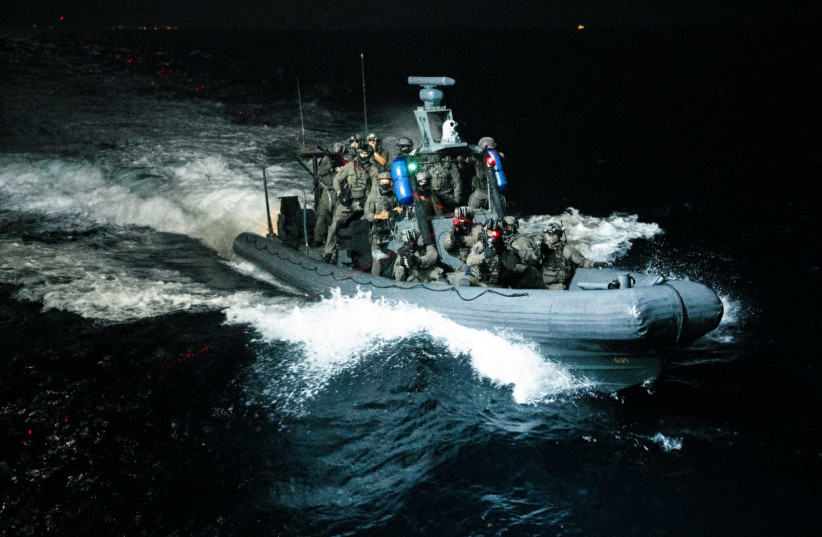How the IDF is turning guerilla warfare against Hamas in Gaza – analysis
The IDF invasion of Gaza has begun, you just did not hear about it, or heard about it but could not tell.
In the last couple of days, the IDF initiated three targeted and short incursions into Gaza, before withdrawing each time.
Two of the incursions were by land and a third was by sea by Shayetet 13 naval commandos.
You did not hear about it or it did not register as significant because, tactically speaking, all each incursion did was destroy a limited number of Hamas infrastructure targets and engage a small number of peripheral Gaza fighters.
Prior airstrikes for three weeks have done far more damage, so the impact was pretty limited.

The media also has not been impressed with these small incursions because the expectations had been set for three weeks of a massive ground assault – the largest ever into Gaza – drawing on the 360,000 IDF reservists who were called up.
What has happened has been minuscule compared to that and still has not even reached the 2014 Gaza war invasion level, which itself was limited.
There are important questions about whether delaying the invasion until now was the right move. Also, there are questions about whether the rest of the large-scale invasion will be delayed beyond a point where world pressure on Israel to end the war escalates.
But assuming the rest of the large-scale invasion happens in the relatively near future, the concept of rolling out the invasion in steps, starting with a variety of surprise and fast “in and out” moves is sound and even smart.
Some analysts thought this process had even started two weeks ago, only to learn a day or two later that reported incursions into Gaza back at that time, were just barely over the border to gather bodies and did not even involve really engaging Hamas.
Essentially, the IDF is turning guerilla warfare tactics on Hamas.
Turning guerrilla warfare on Hamas
Hamas’ only chance to survive at this point is to bog Israel down with ambushes, boobytraps, and hit-and-run-style attacks deep in Gaza’s cities so as to neutralize Israel’s aerial and other technological advantages.
Smartly, the IDF is not just taking the bait.
Guerilla warfare is almost as old as war, but traditionally it was used by the little/weaker side to hold off the larger/less agile side.
Since terrorists, whether against Israel or the US, started systematically employing guerilla warfare and human shields in urban settings, Washington, and sometimes Jerusalem, have started to figure out that being the larger and more powerful force does not mean needing to give up being agile and using the element of surprise.
By making targeted incursions and regularly changing the spots where the incursions take place, the IDF is keeping Hamas on edge.
Put simply, Gaza’s terror rulers do not know where the IDF may jump out from next.
This is designed to make Hamas antsy to the point that it negatively impacts morale, to have it start second-guessing its defensive posture, to enable the IDF drone and other surveillance platforms to observe Hamas movements adjusting that posture (which helps reveal some of its hiding places), and to get Hamas to prematurely to activate boobytraps and ambushes without being able to maximize their impact on larger groups of IDF troops.
These guerilla warfare tactics, which are essentially the IDF’s own version of “hit and run” can also flip Hamas’ pre-October 7 game of luring Israel into complacency on its head.
True, Hamas is disciplined and may be able to see through a number of small incursions while maintaining readiness for the later large invasion, but it is only natural that some of its readiness will go down, as Hamas fighters get used to the incursions as being minor and “false alarms” compared to the grand invasion.
If the IDF applies the tactic properly, it will start making multiple targeted short incursions at the same time with a high enough frequency that Hamas will become more and more confused about what will happen next, about when an incursion might be larger, and about from where will it come – and then strike at that moment when Hamas’ guard has suddenly gone down.
This will enable the IDF to get an initial foothold in Gaza with larger troops before Hamas can fully adjust and mount a counter-offensive.
None of this means that the IDF can avoid significant casualties.
At some point, troops will need to exit their armored personnel carriers and go house to house, street corner by street corner, to root out terrorists hiding in tunnels, attacks, and anywhere else small that drones and technological platforms may miss without boots on the ground up close.
Hamas will then get its chance to blow up IDF troops when they open a house door, to gun them down through hidden small holes in walls for just a tiny and impossible-to-see part of the nozzle firing part of a gun to slide through and to fire anti-tank missiles on IDF vehicles which are bogged down in an area setup for a crossfire ambush.
But fighting guerilla warfare with guerilla warfare shows respect for the adversary, forces IDF forces to maintain a greater agility and operational awareness, improves intelligence understanding of Hamas’ defensive posture, and should at least improve IDF morale at the initial stages of the invasion.
In short, the initial limited incursions are by no means a basis to significantly delay or replace a larger invasion. But when used properly, it can enhance the chances of the invasion’s success substantially.





Comments are closed.